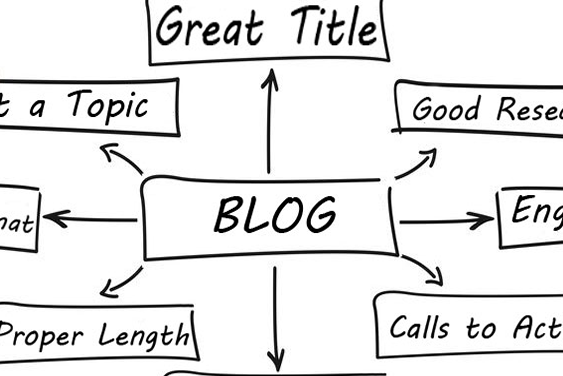Digital marketing is a constantly evolving field, so fresh content is incredibly important. Content creators and marketers are always looking for new, interesting ways to keep their websites at the top of Google’s search results, and “fresh content” is often seen as a key factor. But what does Google consider “fresh content?” Is it simply about publishing new blog posts, or is there more to the concept? In this article, we’ll discuss what fresh content means to Google, the role it plays in SEO, and how you can make sure your content strategy meets Google’s expectations.
Understanding Google’s “Freshness” Concept
Google’s approach to freshness is based on its commitment to delivering the most relevant and up-to-date information to users. This focus led them to develop the “Query Deserves Freshness” (QDF) algorithm, which plays a huge role in determining when fresh content should be prioritized in search results. The QDF algorithm’s purpose is to identify queries that require the most recent information, like breaking news, trends, and other time-sensitive topics.
The concept of freshness became even bigger when Google rolled out its Caffeine update in 2009. This update made tons of changes to Google’s indexing system, so it could crawl the web more efficiently and deliver fresher search results faster. According to Google, the Caffeine update provided “50 percent fresher results” for web searches, demonstrating how important it is to keep content up to date.
In 2011, Google made another update, called the Freshness Update. This update provided more recent search results for specific types of queries, especially those that need the latest information. The Freshness Update was estimated to impact around 6-10% of searches, making it a significant factor in SEO.
Does Posting New Content Always Equal Fresh Content?
Many of today’s content creators make a common misconception, that simply posting new content is fresh content in Google’s eyes. While it’s true that publishing new blog posts can contribute to a site’s freshness, it’s not the only thing Google takes into account. In fact, Google’s new algorithms take a much deeper approach to evaluating freshness, focusing on the relevance of and updates to existing content just as much as new publications.
For instance, Google prioritizes content that is both new and relevant to current user queries. This means updating existing content with new information, data, or insights can sometimes be more effective than publishing a brand-new post on a similar topic. Google’s algorithms can detect meaningful changes in content, such as the addition of new sections, updated facts, or adding of recent developments in the topic. These updates demonstrate that the content has been refreshed to Google, which makes it more likely to be relevant to searchers.
Moreover, superficial changes, like just updating the publication date or tweaking a few sentences, probably won’t have a significant impact on a page’s freshness score. Google’s algorithms are advanced enough to see the differences between substantial updates and minor changes. As a result, content creators need to focus on making meaningful improvements to their existing content instead of relying solely on publishing new posts.
Best Practices for Maintaining Freshness
To effectively keep your content fresh, you need to strike a balance between publishing new content and updating existing material. Here are some best practices to help you keep your content fresh in Google’s eyes:
- Regularly Update Older Posts: One of the most effective ways to maintain freshness is by revising and updating older blog posts. This can involve adding new information, updating statistics, or changing sections that are now outdated. By keeping older content up-to-date, you can make sure it remains relevant and continues to rank well in search results.
- Republish Content with Significant Updates: When you make substantial changes to a piece of content, think about republishing it with a new date. This shows Google that the content has been refreshed and can help it rank higher for relevant queries. Republishing is particularly effective for evergreen content that remains valuable over time but requires periodic updates to stay current.
- Align Content with Current Trends: Your content will have the most impact when you align it with current trends and user queries. This might involve creating new content on trending topics or revisiting older content to add new insights or perspectives. By staying on top of what users are searching for, you can increase the chances of your content being deemed fresh and relevant by Google.
- Avoid Superficial Changes: As mentioned earlier, superficial changes like updating the publication date or making minor edits won’t do much to boost your content’s freshness score. Instead, focus on making updates with meat that enhance the value and relevance of the content. This could include adding new sections, incorporating multimedia elements, or expanding on important points.
- Use Google Search Console: After updating your content, think about submitting it to Google through Search Console. While Google will eventually discover the changes on its own, submitting updated content can make the reindexing process faster, especially for significant updates. This can help your refreshed content rank more quickly.
When to Focus on New Content
While updating existing content is important, there are scenarios when creating new content is the best strategy. New content is particularly important for topics that are rapidly evolving or for queries that demand the latest information. For example, blog posts that cover current trends, news, or emerging technologies tend to need fresh content to stay relevant.
Additionally, if you notice your existing content isn’t resonating with your audience anymore or if there are gaps in your coverage, it’s probably time to create some new content. Evergreen topics that attract long-term interest are also prime candidates for new content creation, since their value lasts a long time and can continue to drive traffic far into the future.
Taking Advantage of Fresh Content
When it comes to SEO, freshness is a dynamic concept that goes beyond just publishing new blog posts. Google determines content freshness based on its relevance, updates, and alignment with current user queries. To give your content the most impact, it’s important to keep a balance between publishing new material and updating existing content. By following best practices and understanding what Google truly values in fresh content, you can make your site more visible and make sure your content stays competitive in search rankings.
Remember, in Google’s eyes, fresh content is about more than just being new; it’s about being relevant, updated, and valuable to users.





